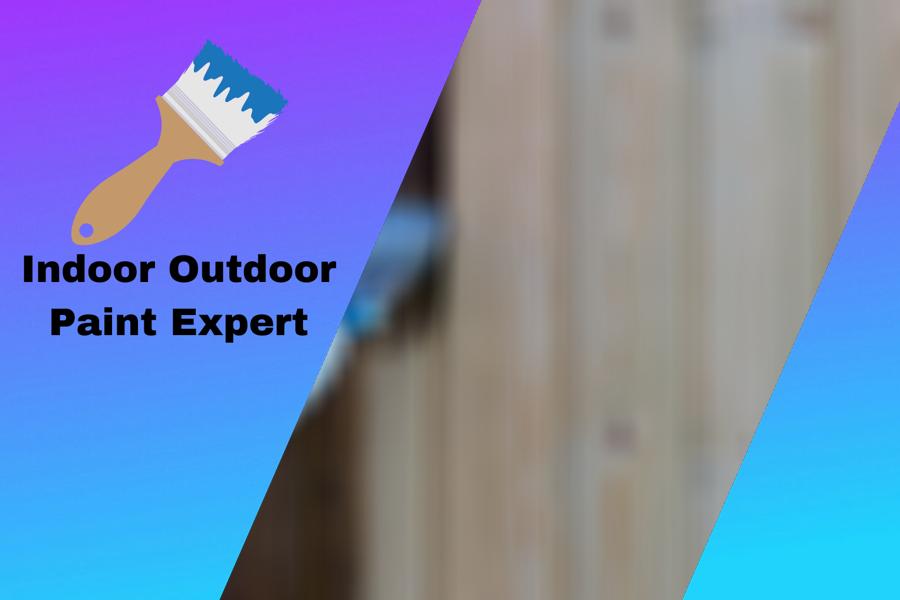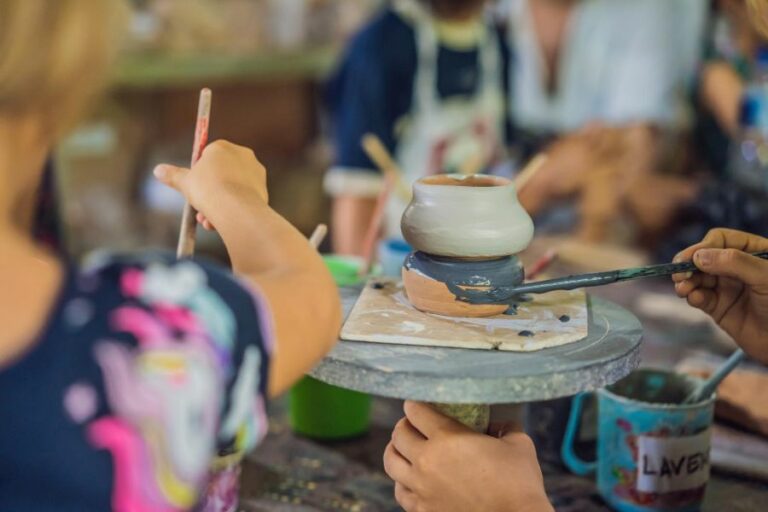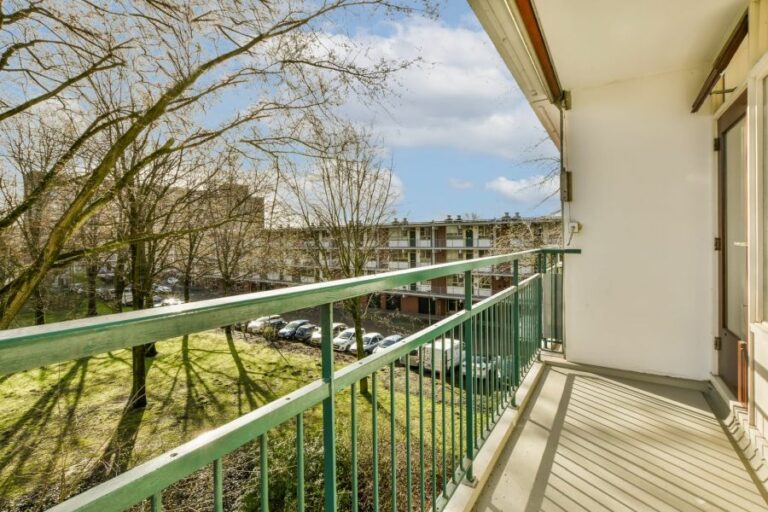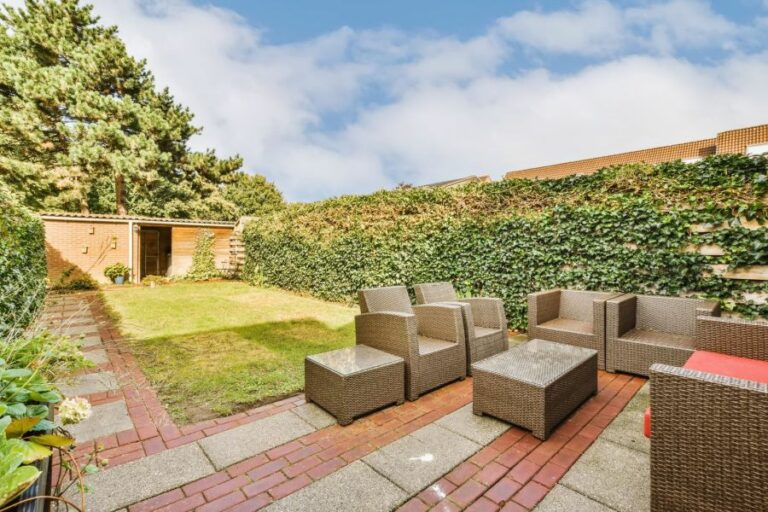Will Outdoor Paint Protect Untreated Wood. What pros say
Are you seeking ways to protect your wooden surfaces from relentless weather damage? Our latest blog post, “Will Outdoor Paint Protect Untreated Wood?” delves deep into the ultimate solution. Discover how applying outdoor paint on untreated wood surfaces reduces decay and pests and helps maintain the structure’s pristine look for an extended period.
We cover vital insights with expert guidance on selecting the correct paint to ensure robust, long-lasting protection for your priceless wooden surfaces. Stay with us as we unravel the secrets to enhancing the longevity of untreated wood with the power of outdoor paint.
Will outdoor paint protect untreated wood:>
Untreated wood is vulnerable to moisture, pests, and weathering. Outdoor paint is a protective barrier, extending the wood’s lifespan and maintaining its appearance. Select outdoor paint suitable for the wood type, location, and desired finish to achieve optimum results. Proper surface preparation, including surface cleaning, sanding, and priming, is essential. Choose between brush, roller, or sprayer application methods, and ensure long-lasting protection by using high-quality paint, applying multiple coats, and performing regular maintenance.

Discover the effectiveness of outdoor paint on untreated wood, learn how it can shield against damaging elements, and delve into crucial factors to consider for long-lasting protection. Unlock the secrets to preserving your wooden masterpieces today!
Contents
- 1 Will Exterior Paint Adequately Protect Untreated Wood?
- 2 What are the methods to safeguard untreated wood for exterior applications?
- 3 What is the Durability of Untreated Wood Outdoors if it is Painted?
- 4 Does applying paint prevent wood from decaying and rotting?
- 5 Does Untreated Wood Experience Rotting When Painted?
- 6 Is Untreated Wood Capable of Withstanding Outdoor Conditions?
- 7 Is Priming Necessary Before Painting Untreated Wood Surfaces?
Will Exterior Paint Adequately Protect Untreated Wood?
Untreated wood is vulnerable to moisture, pests, and the effects of weathering. Outdoor paint can serve as a protective barrier to extend the lifespan of wood and maintain its appearance.
This article examines the importance of using outdoor paint for untreated wood protection and the best practices to ensure optimum results.
• The Importance of Protecting Untreated Wood
Untreated wood lacks the necessary resistance to environmental factors that can quickly lead to damage, such as rot, decay, and warping. By applying outdoor paint, wood surfaces gain protection against the following:
- Moisture: Excess moisture can result in wood rot, mildew, and fungal growth. High-quality paint creates an effective barrier to prevent water from seeping into the wood.
- Sun exposure: Prolonged exposure to the sun and its harmful ultraviolet (UV) rays can lead to wood fiber breakdown, causing fading, cracking, and splitting. Outdoor paint containing UV inhibitors protects wood from sun-related damage.
- Pests: Wood is a favored meal for insects like termites and carpenter ants. Outdoor paint is a protective layer that deters pests from infesting and damaging the wood.
– Choosing the Right Outdoor Paint for Untreated Wood
Various types of outdoor paint are available, each designed for specific needs and purposes. When selecting the appropriate paint for untreated wood, consider the following factors:
- Type of wood: Different wood species absorb paint differently, so it’s essential to choose a product that is suitable for the specific wood type.
- Location: The wood’s exposure to various elements will determine the level of protection required. For example, wood in areas with heavy rainfall may require paint with excellent water resistance.
- Finish: The desired finish, whether matte or glossy, should be considered when selecting outdoor paint.
– Proper Surface Preparation for Effective Results
Proper surface preparation is critical to ensure that the paint adheres well to the wood and provides the intended level of protection. Untreated wood should be prepared as follows:
- Clean the surface: Begin by removing dirt, debris, and any mildew or mold from the wood surface. A stiff bristle brush and a solution of water and mild detergent should suffice. Allow the wood to dry completely before proceeding.
- Sand the surface: Smooth the wood surface by sanding it with medium-grit sandpaper. This will open the wood pores to allow for better paint absorption. Afterward, use fine-grit sandpaper to achieve a smooth finish. Be sure to sand in the direction of the wood grain and remove any dust particles created during the process.
- Apply a primer: A high-quality primer is essential to ensure proper paint adhesion and prevent peeling, blistering, or staining issues. Apply the primer to the wood surface and let it dry thoroughly. Check the manufacturer’s recommendations for prime application and drying times.
– Selecting the Best Paint Application Method
There are three primary methods for applying outdoor paint to untreated wood: brush, roller, or sprayer. Each method offers its advantages and drawbacks, so choosing the one that best suits your needs and preferences are essential.
- Brush: Painting with a brush offers excellent control and precision, making it ideal for smaller surfaces or areas with intricate details. Using a high-quality, synthetic-bristle brush will ensure even paint distribution.
- Roller: Rollers cover large surface areas quickly and evenly, making them suitable for larger projects like fences or decks. Use a foam or short-nap roller for the best results.
- Sprayer: Paint sprayers can efficiently apply paint over large surfaces or in tight corners, but they may require additional preparation and cleanup. Additionally, technique and weather conditions may affect the final results, so practice and patience are necessary for using a sprayer.
– Essential Tips for Long-lasting Protection
To ensure the outdoor paint provides maximum protection to untreated wood, follow these essential tips:
- Choose a high-quality paint: Opt for a premium grade, weather-resistant paint designed explicitly for the outdoors, and follow the manufacturer’s instructions for the best results.
- Apply multiple coats: Applying at least two coats of paint will ensure a more durable and even finish. Allow sufficient drying time between coats, as recommended by the paint manufacturer.
- Regular maintenance: Like all exterior surfaces, painted wood requires routine maintenance to retain its protective qualities. Periodic inspection and touch-ups will help to maintain the paint’s effectiveness and extend the life of the wood.
• Conclusion
Outdoor paint can protect untreated wood from various elements and damage if applied correctly and regularly maintained. By following the best practices outlined in this article, you can add years to the lifespan of your wood surfaces and maintain their beauty and integrity.
What are the methods to safeguard untreated wood for exterior applications?
Untreated wood can be beautiful, practical, and affordable for outdoor projects like decks, pergolas, and garden furniture. However, exposure to sun, rain, and humidity can cause untreated wood to rot, split, or warp over time. To prolong the life of untreated wood, it’s essential to protect it from outdoor elements properly.
In this article, we’ll walk you through the various treatments available to protect untreated wood from weathering, how to apply them, and tips for maintaining your wood pieces and ensuring their longevity.
• Choosing the Right Wood Species
Before focusing on surface treatments, choosing the right wood species suitable for outdoor use is essential. Some types of wood, such as cedar, redwood, and teak, are naturally resistant to decay and insect damage, making them more durable for outdoor projects.
While these wood types are more expensive than woods like pine, their natural resistance to the elements can save time and money over the long run for maintenance and treatments.
• Sealants and Stains: Protection for Outdoor Wood
Using sealants and stains is an effective method for protecting untreated wood from weathering, and they come in water-based and oil-based formulas. Here are the primary types of sealants and stains with their advantages and disadvantages:
– Clear Sealers
Clear sealers are transparent finishes that protect the wood from moisture and UV damage while retaining its natural color and appearance. These sealers consist of various resins, such as polyurethane, acrylic, or silicone, that form a protective barrier on the wood surface.
- Easy to apply and clean
- Allows natural wood grain and color to show through
- Generally, need to be reapplied annually
– Tinted Sealers
Tinted sealers provide the same protection as clear sealers but with added pigments, offering some protection against UV damage and fading. These sealers are available in a range of colors and shades.
- Offer more UV protection than clear sealers
- Customize the wood’s appearance with different pigments
- It may require more frequent reapplication than solid stains.
– Semi-Transparent Stains
Semi-transparent stains offer more color than tinted sealers while allowing the wood grain to shine through. These stains also provide better UV protection and are more resistant to wear and tear.
- Better UV protection than tinted sealers
- Require reapplication every few years
– Solid Stains
Solid stains provide the best UV protection of all the stain types, and they cover the wood completely, hiding its natural appearance. These stains last longer than semi-transparent stains but may need complete removal when it’s time to reapply.
- Maximum UV protection
- Longer-lasting protection than semi-transparent stains
- It may require more work when it’s time to reapply.
• Applying Sealants and Stains
– Preparing the Wood Surface
Proper surface preparation is crucial for the success of any wood treatment. Before applying any sealer or stain, ensure the wood is clean, dry, and free of dirt or loose wood fibers.
- Clean the wood using a stiff brush and a mild detergent diluted in water. This will help remove any dirt and grime.
- Rinse thoroughly with water and allow the wood to dry completely. It may take up to 48 hours for the wood to dry.
- Sand the surface with medium-grit sandpaper to smooth out any rough spots.
- Wipe the surface with a tack cloth to remove dust and debris.
– Applying the Sealer or Stain
After preparing the wood surface, follow these general guidelines to apply the sealer or stain of your choice:
- Stir the sealer or stain thoroughly before using it. This will ensure a smooth, even application.
- Use a brush, roller, or sprayer to apply the sealer or stain, following the manufacturer’s instructions.
- Apply several thin coats for the best protection and appearance, allowing the sealer or stain to dry between coats.
- After the final coat, let the finish cure for at least 24 hours before using the wood.
• Maintenance and Wood Care
Even after treating outdoor wood with sealants and stains, it’s essential to maintain it regularly. Here are some tips for ensuring the longevity of your outdoor wood projects:
- Clean the wood regularly with mild soap and water to remove dirt and prevent mold growth.
- Inspect the wood periodically for signs of peeling, fading, or wear. Reapply the sealer or stain when necessary, following the manufacturer’s directions.
- Reduce direct sun exposure by using shade structures or UV-resistant covers if possible.
- To prevent further deterioration, check for and promptly repair any damage (e.g., cracks, splinters).
In conclusion, protecting untreated wood for outdoor use is essential in prolonging its durability and beauty. By choosing the right wood species, using appropriate sealers or stains, and maintaining your wood pieces, you can ensure that your outdoor wood projects will look great and last for years.
Method | Description |
|---|---|
Seal the wood | Apply a wood sealer or wood preservative to seal the wood and protect it from moisture and insects. |
Use a wood stain or paint | Ensure your wood installation allows for proper airflow and drainage, preventing excess moisture from rotting the wood. |
Consider using pressure-treated wood | Pressure-treated wood has been treated with chemicals to resist decay and insects, making it a better choice for outdoor use. |
Install wood in a well-ventilated area | Make sure your wood installation allows for proper airflow and drainage, preventing excess moisture from rotting the wood. |
Maintain and inspect regularly | Regularly check your wood for signs of damage and apply maintenance treatments such as re-sealing and painting as needed to prolong its lifespan. |
What is the Durability of Untreated Wood Outdoors if it is Painted?
When planning a project that involves wood and exposure to the elements, one of the primary concerns is ensuring the wood’s longevity. In this article, we will explore the various factors that affect the lifespan of untreated wood outdoors and how painting can help prolong its durability.
We’ll also look at proper paint application techniques and additional precautions that can be taken to ensure a long-lasting, attractive finish.
• Factors That Affect the Lifespan of Untreated Wood
– Type of Wood
The specific type of wood used in your outdoor project is a significant factor in determining its longevity. Some wood species are naturally more resistant to decay and insect damage, such as cedar, redwood, and black locust, whereas others, like pine and spruce, are more susceptible to decay.
Choosing the appropriate wood species for your project can greatly influence the lifespan of untreated wood.
– Environmental Conditions
The climate and specific environmental conditions play a significant role in the lifespan of untreated wood outdoors. In areas with high humidity, constant temperature fluctuations, and exposure to extreme weather conditions, untreated wood is more susceptible to decay, warping, and insect damage.
Ensuring the wood has proper drainage and good air circulation can help minimize moisture-related issues and prolong the wood’s lifespan.
– Exposure to Sunlight
UV radiation from the sun can break down the wood’s fibers, causing discoloration and weakening its structure. Prolonged exposure to sunlight will eventually cause the wood to become brittle and crack. Using a paint that provides UV protection is an excellent option to help mitigate the effects of sunlight on untreated wood.
• The Benefits of Painting Untreated Wood
Painting untreated wood serves several purposes, which ultimately help to prolong its lifespan outdoors.
– Protection from Moisture
Paint effectively seals the wood’s surface, acting as a barrier against moisture infiltration. Painting untreated wood can significantly reduce the likelihood of decay, warping, and swelling by preventing moisture from seeping into the wood fibers.
– Resistance to Insects and Fungi
Painting untreated wood can also protect against insects and fungi. Termites and wood-boring insects are less likely to infest wood protected by paint, as the paint is a barrier to their access. Likewise, the paint can impede the growth of wood-rotting fungi, further increasing the wood’s longevity.
– Enhanced Aesthetic Appeal
In addition to offering protective benefits, painting untreated wood can significantly enhance the wood’s appearance. The paint can help prevent discoloration from sunlight exposure and provide a uniform, attractive finish that complements your outdoor project.
• Tips for Proper Paint Application
To ensure a long-lasting finish with maximum protective benefits, it’s important to follow the right steps when painting untreated wood.
– Proper Surface Preparation
Before applying paint to untreated wood, ensure the surface is clean, dry, and free from dirt or debris. Sand, the wood surface to create a smooth surface that allows the paint to adhere properly.
If the wood surface is particularly rough, consider using a wood preservative or a high-quality exterior primer to seal the wood and better prepare it for paint application.
– Choose the Right Paint
Opt for a high-quality exterior paint specifically designed for wood surfaces when selecting paint for untreated wood. These paints often contain additives that offer UV protection, moisture resistance, and enhanced durability.
I recommend using high-quality acrylic-latex exterior paints, as they provide excellent adhesion and durability while remaining flexible to accommodate wood’s natural expansion and contraction.
– Apply Multiple Coats of Paint
For optimal protection, apply multiple coats of paint to the untreated wood. Multiple coats ensure thorough coverage and create a thicker, more durable barrier against moisture, insects, and fungi. Follow the paint manufacturer’s recommendations for the number of coats and the appropriate drying time between each application.
• Additional Protective Measures
Beyond painting untreated wood, there are other steps you can take to protect it from the elements further and increase its lifespan.
– Use Wood Preservatives
Consider treating the wood with a wood preservative before painting, particularly if the wood species is more susceptible to decay or insect damage. Wood preservatives can help prevent decay, deter insect attacks, and increase the wood’s overall durability.
– Proper Maintenance
Regular maintenance is crucial in prolonging the lifespan of painted untreated wood outdoors. Inspect your wood regularly for any deterioration, such as cracking, peeling paint, or insect damage. Address any issues as soon as they arise, and be prepared to repaint or touch-up paint as needed to maintain the wood’s protective finish.
In conclusion, untreated wood’s lifespan outdoors depends widely on the specific wood species and environmental conditions it is exposed to. Painting untreated wood can significantly increase its durability, protecting it from moisture, insects, and the harmful effects of sunlight.
By selecting appropriate materials, following proper paint application techniques, and maintaining the painted wood regularly, you can ensure a long-lasting, attractive finish for your outdoor wood projects.
Wood Type | Untreated Life Expectancy (Years) | Painted Life Expectancy (Years) |
|---|---|---|
Pine | 5-10 | 10-15 |
Cedar | 15-20 | 20-25 |
Redwood | 20-30 | 30-40 |
Oak | 10-15 | 15-20 |
Teak | 25-50 | 50-75 |
Does applying paint prevent wood from decaying and rotting?
Wood rot is a common issue experienced by homeowners and builders worldwide. While protecting wood from decay and degradation may seem impossible, there are ways to add longevity to your wooden structures.
One of the most common solutions used to protect the wood from rot is paint. This article will discuss paint’s effectiveness in preventing the wood from rotting, the various types of paint used for this purpose, and other factors to consider when looking for the best possible protection method.
• Overview of Wood Decay and Rotting
Before discussing the protective qualities of paint, it’s important to understand the root cause behind wood rotting – moisture. When wood is exposed to excessive moisture or direct contact with the soil, it welcomes the growth of fungi and other microorganisms.
These fungi break down the wood fibers, leading to decay and rot. Wood rot can be broadly categorized into two types:
- Dry rot: This rot occurs when the wood’s moisture content is below 20%, and it is caused by specific fungi that can consume wood even at low moisture levels.
- Wet rot: This rot occurs when the wood’s moisture content is above 20%, and various fungal species cause it. Wet rot typically progresses faster than dry rot.
To combat wood decay, it is essential to minimize the wood’s exposure to moisture and create a protective barrier. This is where paint comes into play.
• The Role of Paint in Protecting Wood from Rot
Paint is a barrier between the wood surface and external elements like moisture, ultraviolet (UV) rays, and temperature fluctuations. When applied correctly, paint can extend the life of the wood by preventing these factors from degrading the wood fibers. There are three main types of paint used to protect the wood from rot:
- Water-based paints: Water-based paints contain acrylic resins and highly resist moisture, UV rays, and temperature changes. Water-based paints are easy to clean and maintain, making them ideal for outdoor wooden structures. Additionally, they dry quickly and emit fewer odors than other paint types.
- Oil-based paints: Oil-based paints use alkyd resins and provide excellent water resistance and durability. They take longer to dry than water-based paints but offer a smoother finish. However, oil-based paints emit higher levels of odor and VOCs (volatile organic compounds), making them less environmentally friendly.
- Epoxy paints: As the most durable type of paint, epoxy paints create a strong bond with wood and offer superior moisture and chemical resistance. However, they are more difficult to apply and require thorough surface preparation.
While using paint can significantly reduce the risk of wood rot, it is essential to consider additional factors for an effective protection strategy.
• Additional Factors for Effective Wood Protection
Applying paint to wood is not a one-time solution for preventing wood rot. Various factors are essential to ensure that paint provides long-lasting protection against decay:
- Surface preparation: Properly cleaning and preparing the surface is crucial before painting wood. Remove any dirt, grease, or existing paint using a scraper, sandpaper, or a power washer. This will ensure the paint adheres effectively to the wood and provides a durable finish.
- Primer application: A primer to the wood surface is essential in preventing wood rot. Primers help seal the wood pores and provide a stable base for paint adherence. They also enhance the paint’s protection against moisture and other external elements. Choose a high-quality primer compatible with the type of paint you plan to use and follow the manufacturer’s instructions for application.
- Use of quality paint: The quality of paint plays a crucial role in determining the level of protection against wood rot. Investing in high-quality, water-resistant paint specifically formulated for wood will provide long-lasting protection and reduce the frequency of maintenance and repainting.
- Regular maintenance: Regular inspection and maintenance of painted wood surfaces are necessary for maximum protection against wood rot. Identify any signs of paint chipping, peeling, or bubbling and address them promptly to maintain the paint’s protective capabilities.
• In Conclusion
In conclusion, paint can protect the wood from rotting if correctly applied and maintained. By selecting the appropriate type of paint, properly preparing the surface, using a high-quality primer, and performing regular maintenance, you can ensure long-lasting protection for your wooden structures against decay and degradation.
It is essential to remember that while paint plays a significant role in wood protection, it is not the only factor. Homeowners and builders should also consider other factors like wood species, wood treatment options, and proper construction methods to minimize the risk of wood rot and extend the life of wooden structures.
A well-rounded wood protection plan will provide the most effective results in preventing wood decay and rot.
Does Untreated Wood Experience Rotting When Painted?
Protecting wood from rot is essential for any building or woodworking project. Wood, as a natural material, is prone to decay due to exposure to environmental conditions. A common question for many is whether or not untreated wood will rot if painted.
In this article, we will explore how painting untreated wood can impact its susceptibility to rot and discuss other strategies for preventing decay in wood.
• The Effects of Paint on Untreated Wood
Paint serves as a barrier between the wood and the surrounding environment. A high-quality paint job can protect against moisture, sunlight, and insect infestations, all of which can contribute to wood rot. However, the question remains, will painting untreated wood prevent rot from occurring?
While paint can delay the onset of rot in untreated wood, it is not a foolproof solution. Here are some factors that determine the effectiveness of paint in preventing wood rot:
– Type of Paint
Selecting the right type of paint for your wood ensures optimal protection. Look for paints specifically designed for exterior wood surfaces, as these contain additives that resist moisture penetration, ultraviolet (UV) radiation, and temperature fluctuations.
High-quality acrylic latex paints provide excellent adhesion and flexibility, making them ideal for protecting wood against rot.
– Wood Preparation
Properly preparing the wood surface for painting is crucial to achieving a long-lasting protective layer. Untreated wood should be thoroughly cleaned, sanded, and primed before applying paint. This not only ensures good paint adhesion but also helps to seal the wood against moisture penetration.
– Paint Application
Adequate coverage of wood surfaces is necessary to achieve an effective barrier against rot. Applying multiple coats of paint helps to create a thicker protective layer. Furthermore, paying special attention to wood joints, end grains, and any other areas where moisture may easily penetrate is important.
• Additional Strategies for Preventing Wood Rot
While painting untreated wood can help to delay rot, it is often insufficient for preventing decay in the long term. Here are some additional strategies for wood rot prevention:
– Use Treated Wood
When building outdoor projects or structures exposed to the elements, using treated wood should be your first defense against rot. Pressure-treated wood is impregnated with chemical preservatives, making it resistant to decay and insect attack. Treated wood lasts longer than untreated wood and requires less maintenance.
– Choose the Right Wood Species
Some wood species are naturally resistant to decay due to their density and natural oils. Hardwoods like cedar, redwood, and white oak are less prone to rot than softer woods like pine and spruce. Using rot-resistant wood can help to prolong the lifespan of your wood projects.
– Proper Construction Techniques
Adopting appropriate construction techniques can help to inhibit wood rot. Avoid designing wood structures with tight joints or hard-to-reach areas where moisture can accumulate. Ensure adequate air circulation around wood surfaces to facilitate drying.
– Regular Maintenance
Regular inspection and maintenance of wood structures are vital for preventing rot. While paint can be a protective layer, it may chip, crack, or peel over time, exposing the wood to moisture. Regularly repaint or apply water-repellent treatments to maintain the protective layer on your wood surfaces.
• Conclusion
In summary, while painting untreated wood can provide some protection against rot, it is not an infallible solution. The effectiveness of paint in preventing wood rot depends on factors such as the type of paint used, wood preparation, and paint application.
To ensure long-lasting protection against rot, it is advisable to use treated wood or naturally rot-resistant wood species, adopt proper construction techniques, and maintain regular upkeep of wood surfaces. By taking these preventive measures, you can preserve the integrity of your wood projects and protect them from decay.
Is Untreated Wood Capable of Withstanding Outdoor Conditions?
When using wood for outdoor projects and furniture, it’s essential to understand the lifespan and durability of untreated wood when exposed to the elements. In this article, we will discuss untreated wood’s challenges when placed outside and offer some solutions to increase its longevity.
• The Elements’ Impact on Untreated Wood
One of the primary concerns with untreated wood left outside is the impact of the elements, including sunlight, rain, and temperature fluctuations. These factors can contribute to the degradation of untreated wood, leading to issues such as warping, cracking, and rotting.
– Sunlight
Prolonged exposure to sunlight can cause untreated wood to fade and become discolored and contribute to the wood’s brittleness. Intense UV (ultraviolet) rays can break down the wood’s lignin, which holds the wood’s cellulose fibers together. This can cause the wood to warp, crack, and eventually break down.
– Rain and Moisture
Wood is a porous material, and when left untreated, it can absorb moisture from the environment, leading to swelling and eventual rotting. Notably, some types of wood, such as cedar and redwood, possess natural oils that make them more resistant to moisture and decay. However, even these woods will eventually deteriorate when left untreated and exposed to constant moisture.
– Temperature Fluctuations
Rapid temperature changes can also impact untreated wood left outside. For instance, the wood undergoes constant expansion and contraction during hot days and cold evenings, leading to warping, cracking, and other structural damage over time.
• Protecting Untreated Wood from the Elements
Knowing the challenges that untreated wood faces when placed outside, there are a few steps that can be taken to extend its lifespan and improve its durability:
– Choose a naturally rot-resistant wood
As mentioned earlier, some types of wood are naturally rot-resistant due to their inherent oils and density. If you plan to use untreated wood outside, consider using cedar, redwood, or other rot-resistant species, as they will hold up better in external environments over time.
– Keep the wood off the ground
Elevating the untreated wood off the ground will prevent it from coming into direct contact with moisture and decrease the likelihood of rot. A simple spacer or platform to lift the wood and provide proper airflow can help prolong its lifespan.
– Stain or paint the wood
Applying a stain, oil, or paint to untreated wood can create a protective barrier against the elements. These treatments can help prevent the wood from absorbing moisture and offer some protection against UV rays.
Be sure to select an appropriate product specifically designed for exterior applications and follow the manufacturer’s guidelines for application and maintenance.
– Use a waterproofing sealant
A waterproofing sealant forms a protective barrier on the wood’s surface, preventing moisture from penetrating the wood and causing rot. Various sealants on the market are designed explicitly for untreated wood, offering differing levels of protection against the elements.
Be sure to research the specific product and apply it according to the manufacturer’s instructions.
– Regular maintenance
It is essential to monitor the condition of untreated wood left outside regularly. Inspect the wood for signs of cracking, warping, or decay, and address any issues as needed. Keeping the surrounding area clean and debris-free can also help minimize moisture issues and prevent mold or mildew growth.
• Conclusion
In conclusion, untreated wood can stay outside, but it is essential to be aware of its challenges when exposed to the elements. Employing some of the methods discussed in this article, such as choosing a naturally rot-resistant wood, elevating the wood off the ground, and using appropriate exterior treatments and sealants, can significantly extend the lifespan of untreated wood left outside.
Regular maintenance and inspection are also crucial in ensuring the longevity and durability of your outdoor untreated wood projects.
Type of Wood | Lifespan (in years) |
|---|---|
Pine | 5-10 |
Spruce | 8-12 |
Fir | 7-10 |
Cedar | 15-25 |
Redwood | 20-30 |
Is Priming Necessary Before Painting Untreated Wood Surfaces?
When painting untreated wood, a common question arises: Is it necessary to prime the wood before applying paint? This article will discuss the importance of priming untreated wood, the benefits of using primer, and the steps to take for successful painting.
• Importance of Priming Untreated Wood
Priming untreated wood is critical to ensure a long-lasting, high-quality paint job. Untreated wood is porous and can absorb paint unevenly, resulting in a patchy appearance. The wood’s natural tannins may seep through the paint and cause discoloration.
Applying a primer before painting can create a smooth, uniform surface on which the paint will adhere better. Doing so also helps seal the wood, preventing moisture damage and reducing the likelihood of warping and rotting. It improves the durability of the paint finish and ensures a more vibrant and consistent paint color.
• Types of Primers for Untreated Wood
There are several types of primers specifically designed for untreated wood. Considering the wood’s characteristics, such as softwood, hardwood, or engineered wood, will help you select the best primer for your project.
– Oil-Based Primers
Oil-based primers are an excellent option for untreated wood. These primers effectively prevent tannin bleeding and offer a superior seal against moisture. They also offer great adhesion and a sturdy base for latex or oil-based paints.
One drawback of oil-based primers is the longer drying time and the release of strong fumes during application. It’s essential to ensure proper ventilation when using oil-based products.
– Water-Based Primers
Water-based primers are less odorous, dry more quicker, and are easier to clean than oil-based primers. However, water-based primers may not prevent tannin bleed as effectively as oil-based alternatives.
Water-based primers are suitable for wood with low tannin content or when painting the wood with a dark-colored paint that can mask potential discoloration.
– Shellac-Based Primers
Shellac-based primers offer excellent stain-blocking capabilities and are particularly useful for sealing wood that has already been exposed to water damage or smoke stains. Shellac-based primers dry quickly but can be trickier to clean since they require denatured alcohol. These primers can be used under both latex and oil-based paints.
• How to Prime Untreated Wood for Painting
To achieve the best results, follow these steps when priming untreated wood:
– 1. Clean the Wood
Before applying any primer or paint, clean the wood surface thoroughly. Remove dirt, dust, and debris, then wipe the wood with a clean, damp cloth. Allow the wood to dry completely before proceeding.
– 2. Sand the Surface
Sanding the wood surface will help achieve a smooth, even texture while promoting better adhesion for the primer. Use fine-grit sandpaper (120-150 grit) and lightly sand the wood following the grain pattern. After sanding, use a tack or clean, damp cloth to remove any remaining dust.
– 3. Choose the Right Primer
Select the appropriate primer for your wood type, considering the factors mentioned in the previous section. A high-quality primer is essential to achieving a successful paint job and ensuring long-lasting results.
– 4. Apply the Primer
Use a brush, roller, or paint sprayer to apply the primer evenly to the wood surface. Remember to cover edges and corners properly. Apply the primer in thin, even coats, following the wood grain. Allow the primer to dry according to the manufacturer’s instructions, typically between 1 to 24 hours.
– 5. Inspect and Sand
After the primer has fully dried, inspect the wood surface for imperfections. Address any bubbles, brush marks, or uneven areas with a fine-grit sandpaper. Wipe away any dust with a tack cloth or clean, damp cloth.
– 6. Apply a Second Coat (Optional)
A second coat of primer may be necessary for wood with high tannin content or surfaces that may be more prone to damage or staining. Apply the second coat like the first, then sand and clean the wood before applying the paint.
• Final Thoughts
Priming untreated wood before painting is crucial in achieving a successful and long-lasting paint job. It creates a uniform surface that ensures better paint adhesion while sealing and protecting the wood from moisture and tannin bleed. Following the recommendations and steps outlined in this article, you can expect a smooth, durable, and vibrant paint finish for your wood project.
Question | Answer |
|---|---|
Do you need to prime untreated wood before painting? | Yes, applying a primer on untreated wood before painting is important. It helps ensure proper paint adhesion, prevents the wood from absorbing too much paint, and improves the overall appearance and durability of the final paint job. |







